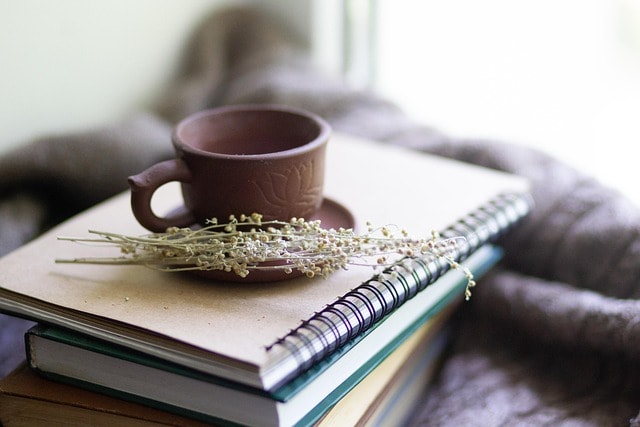Looking for new ways to prepare coffee at home? This guide will show you seven popular brewing methods, from manual techniques to automatic options, that will elevate your coffee game. Whether you’re a fan of the richness and intensity of coffee brewed with specific methods or a refreshing cold brew, you’ll find a method that suits your taste.
Key Takeaways
- Manual brewing methods like pour over, French press, and AeroPress give you control over the brewing process, allowing for a customizable and flavorful cup.
- Automatic brewing methods, such as drip coffee makers and espresso machines, are convenient for busy lifestyles, providing consistency and volume in coffee preparation. The richness and intensity of coffee brewed with these methods can be quite satisfying, especially for those who enjoy a strong and aromatic cup.
- Cold brew and immersion brewing methods, like siphon coffee and Vietnamese Phin filter, offer unique flavor profiles and are excellent choices for those wanting a refreshing or rich coffee experience.
Choosing Your Coffee Brewing Method
Choosing the right coffee brewing method can be overwhelming, especially with the numerous options available. However, by considering a few factors, you can narrow down your choices and find the perfect method for your needs. Here are some tips to help you choose the best coffee brewing method:
- Consider Your Lifestyle: If you’re always on-the-go, a portable brewing method like the AeroPress or a pour-over might be the best choice. These methods are quick, easy to clean, and perfect for travel. If you prefer a more relaxed morning routine, a French press or drip coffee maker might be more suitable, allowing you to savor the brewing process and enjoy a leisurely cup.
- Think About Your Flavor Preferences: If you like a strong, bold coffee, a French press or espresso machine might be the way to go. These methods extract rich, full-bodied flavors that are perfect for those who enjoy a robust cup. If you prefer a smoother, more nuanced flavor, a pour-over or Chemex might be a better fit, as they highlight the delicate notes of the coffee beans.
- Consider Your Budget: Coffee brewing methods can range from very affordable to quite expensive. Set a budget and look for methods that fit within it. For instance, a simple pour-over setup can be very budget-friendly, while an espresso machine might require a more significant investment.
- Think About the Equipment You Already Have: If you already have a coffee maker or grinder, you might want to choose a brewing method that complements those tools. For example, if you have a high-quality grinder, you can experiment with various grind sizes for different brewing methods, enhancing your coffee experience.
By considering these factors, you can find a coffee brewing method that meets your needs and preferences, ensuring a delightful coffee experience every time.
Understanding Coffee Brewing Methods
Coffee brewing methods can be broadly categorized into several types, each offering a unique flavor and texture. Here’s a quick overview to help you understand the different methods:
- Drip Brewing: This method involves pouring hot water over ground coffee beans in a filter. It’s a popular method for its convenience and ease of use, producing a balanced and consistent cup of coffee. Drip coffee makers are a staple in many households, perfect for brewing multiple cups at once.
- French Press: This method involves steeping coarse coffee grounds in hot water and then pressing the grounds to the bottom of the container to separate the liquid. French press coffee is known for its rich, full-bodied flavor, making it a favorite among those who enjoy a robust cup.
- Pour-Over: This method involves slowly pouring hot water over ground coffee beans in a filter. It’s a popular method for its ability to bring out the nuances of the coffee, resulting in a clean and crisp cup. The pour-over process is visually captivating and allows for precise control over the brewing variables.
- Cold Brew: This method involves steeping coarse coffee grounds in cold water for an extended period of time, usually 8 to 12 hours. Cold brew coffee is known for its smooth, low-acidity flavor, making it a refreshing choice for warm weather or those who prefer a milder coffee.
- Espresso: This method involves forcing pressurized hot water through finely ground coffee beans to produce a concentrated shot of coffee. Espresso serves as the base for various coffee drinks, including lattes and cappuccinos, and is prized for its intense flavor and rich crema.
Each brewing method produces a unique flavor and texture, so it’s worth trying out a few to see which one you prefer. Experimenting with different methods can help you discover new aspects of your favorite coffee beans and enhance your overall coffee experience.
Manual Brewing Methods
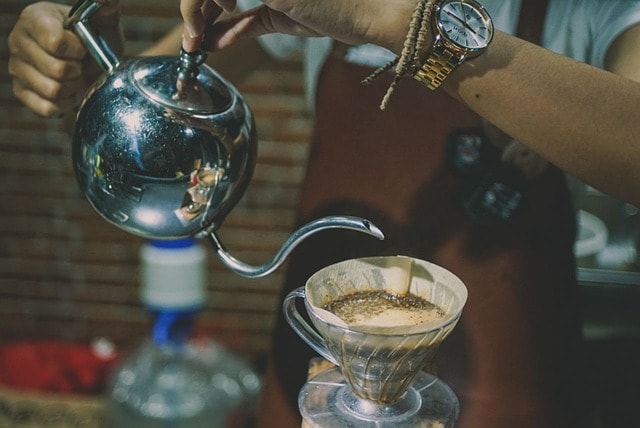
Manual brewing methods offer unparalleled control and customization over the coffee-making process. These techniques allow you to fine-tune every variable, from the grind size to the water temperature, resulting in a cup of coffee that truly reflects your personal taste. Whether you prefer the clarity of pour over coffee, the full-bodied richness of French press coffee, or the concentrated brew of AeroPress coffee, manual methods provide a hands-on experience that many coffee enthusiasts cherish.
Fresh, high-quality coffee beans are a must for manual brewing. Proper storage in an airtight container preserves their freshness and flavor, leading to consistently delicious cups.
Let’s explore some popular manual brewing methods and see how they can transform your coffee experience.
Pour Over Coffee
The pour over coffee method involves manually pouring hot water over coffee grounds in a filter, allowing for precise control over the brewing process. This technique highlights the delicate flavors of the coffee, resulting in a cup with a lighter body and more clarity compared to other methods. The use of a paper filter helps to hold back oils and fine particles, giving the coffee a clean and crisp mouthfeel.
For optimal results, use a medium-fine grind and keep the water temperature stable. A common brew ratio for pour over coffee is 1 part coffee to 17 parts water, with 3 tablespoons (about 20 grams) of ground coffee for a single cup.
This method not only produces a delicious cup but also offers a visually captivating brewing process that coffee enthusiasts will appreciate.
French Press Coffee
The French press method, also known as the immersion brew method, involves steeping coarsely ground coffee in hot water for several minutes before pressing it through a metal mesh filter. This process allows the coffee grounds to steep fully, extracting rich and full-bodied flavors that are heavier and denser than those produced by pour over coffee. The result is a robust and flavorful cup that many coffee lovers find irresistible. French presses are a popular choice for those who appreciate this brewing technique.
To brew French press coffee, use a slightly coarser grind than you would for drip coffee, and let the coffee steep for about 4 minutes before pressing. This method is perfect for those who enjoy a strong, full-bodied coffee with a rich texture.
AeroPress Coffee
AeroPress coffee is a versatile brewing method that uses air pressure to extract rich flavors from the coffee grounds. This method involves steeping finely ground coffee in hot water for a short period before pressing it through a filter using a plunger. The result is a concentrated brew with a delicate, silky mouthfeel, similar to espresso, highlighting the richness and intensity of coffee brewed with this technique.
One of the advantages of the AeroPress is its ability to produce a wide range of coffee styles, from espresso-like shots to a more diluted, pour over-style coffee by adding hot water. This method is also highly portable, making it a favorite among travelers and outdoor enthusiasts.
Automatic Brewing Methods
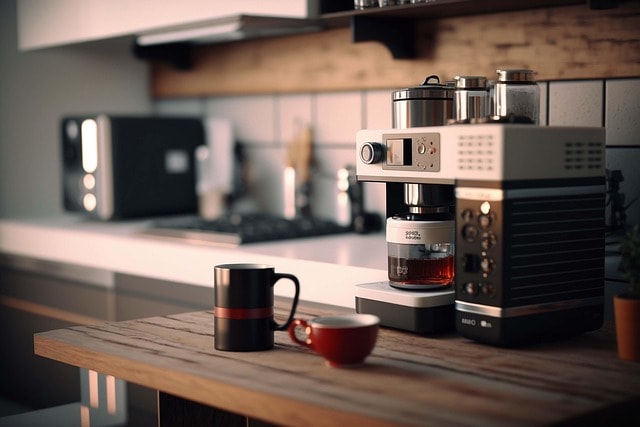
Automatic brewing methods are favored for their simplicity and consistency, making them household staples. They offer a hassle-free way to brew coffee by automating much of the process, resulting in a reliably delicious cup.
Automatic coffee machines are particularly useful for brewing large quantities quickly, making them ideal for busy mornings or entertaining guests. Let’s delve into two popular automatic brewing methods: the drip coffee maker and the espresso machine.
Drip Coffee Maker
A drip coffee maker is a convenient and efficient way to brew coffee, using a paper filter and hot water to extract flavors from the coffee grounds automatically. This method is perfect for those who need to brew multiple cups at once, as it can make up to 12 cups in under 10 minutes. The brewing process with a paper filter results in a clarified mouthfeel, making it ideal for medium roasts and breakfast blends, especially when enjoying a cup of hot drip coffee.
Measure 80 grams of coffee beans for 4 cups of drip coffee and use a medium grind size for optimal flavor. This method offers a balanced flavor profile, appealing to those who enjoy a consistent and straightforward brewing process.
Drip coffee makers are a staple in many kitchens due to their ease of use and ability to produce a large quantity of coffee quickly. This method guarantees a delicious cup of coffee, whether you’re making a single cup or a full pot.
Espresso Machine
Espresso machines provide the ultimate hands-on coffee experience, allowing you to craft rich, concentrated coffee beverages with precision. These machines use high pressure to extract intense flavors from finely ground coffee, resulting in a concentrated brew that serves as the base for various coffee drinks, including lattes and cappuccinos.
The process of making espresso involves carefully measuring and tamping the coffee grounds, then using the machine to force hot water through the coffee under high pressure. This method produces a strong, full-bodied coffee with a rich crema on top, offering a visually captivating brewing process that appeals to coffee enthusiasts.
Espresso machines are versatile and can be used to create a wide range of coffee drinks. Whether you prefer a simple shot of espresso or a frothy cappuccino, this method allows you to experiment and refine your coffee-making skills, resulting in the perfect cup every time.
Cold Brew Methods
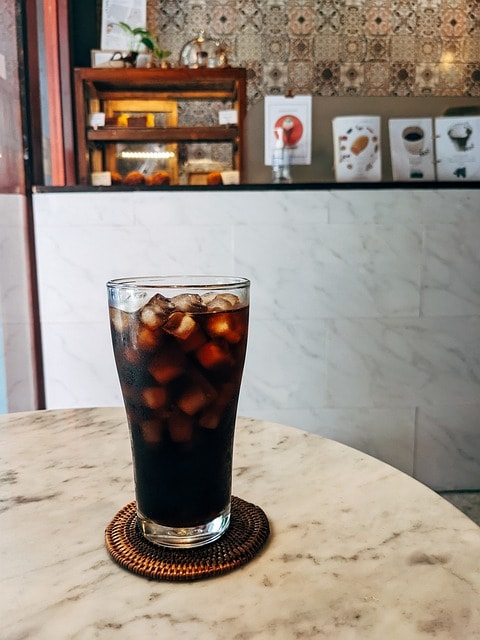
Cold brew methods have gained popularity for their unique flavor profiles and refreshing qualities. These methods involve steeping coffee grounds in cold water for an extended period, resulting in a smooth and less acidic brew compared to traditional hot coffee. Cold brew coffee offers a crisp and refreshing taste, making it perfect for warm weather or those who prefer a milder coffee.
There are two primary cold brew methods: cold brew coffee and iced coffee. While both result in a chilled coffee beverage, they differ in their preparation processes and flavor profiles. Let’s explore each method in detail.
Cold Brew Coffee
Cold brew coffee is made by immersing coarsely ground coffee in room temperature water for 8 to 12 hours, using equipment such as a mason jar, coffee filters, or a French Press. This prolonged steeping process results in a smooth, full-bodied coffee with lower acidity and a rich, complex flavor profile. Cold brew coffee can have fruity, tart, chocolaty, and rich flavors, depending on the beans used.
Though cold brew coffee can be more costly and requires a very coarse ground coffee, it provides a refreshing and versatile concentrate that can be diluted with water or milk. It’s ideal for those who enjoy a smooth, mellow coffee over ice.
Iced Coffee
Iced coffee is created by brewing hot coffee and then cooling it, often served over ice. This method offers a quick and easy way to enjoy a chilled coffee beverage, with the hot brewing process extracting the coffee’s full flavor profile before it is cooled.
The key to making great iced coffee is to brew a strong, full-bodied coffee that can hold up to the dilution from the ice. This method provides a refreshing and flavorful coffee experience, perfect for hot days or when you need a quick caffeine fix.
Stovetop Brewing Methods
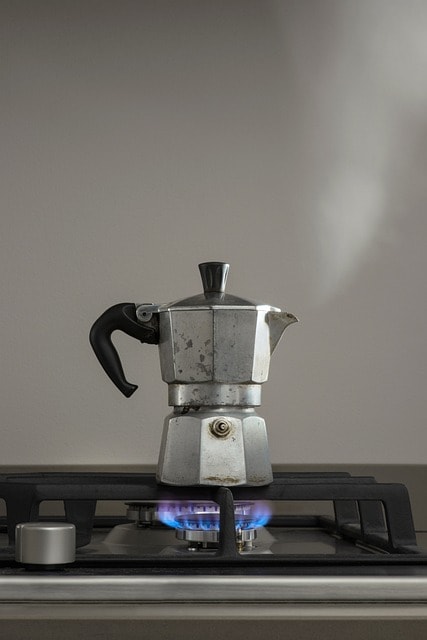
Stovetop coffee brewing methods are known for their ability to extract robust flavors from brewing coffee, using heat and pressure to create a rich and aromatic brew. These methods are perfect for those who enjoy a strong, full-bodied coffee with a rich texture.
Two popular stovetop brewing methods are the Moka pot and Turkish coffee. Both methods offer unique brewing experiences and result in a flavorful cup of coffee. Let’s explore each method in detail.
Moka Pot
The Moka pot brews rich, espresso-like coffee using steam pressure from boiled water. This method involves filling the bottom chamber with water, adding finely ground coffee to the filter basket, and heating the pot on the stovetop. As the water boils, steam pressure forces it through the coffee grounds, resulting in a robust and flavorful brew.
The Moka pot is a favorite among coffee enthusiasts who enjoy a strong, full-bodied coffee with a rich, intense flavor. The coffee brewed with the Moka pot is known for its richness and intensity, making it perfect for those who want an espresso-like coffee without the need for an expensive espresso machine.
Turkish Coffee
Turkish coffee is traditionally prepared in a cezve pot, where finely ground coffee is simmered with water, often along with sugar, to create a thick, frothy brew. This unique brewing method results in a rich, full-bodied coffee with a distinctive frothy layer on top known as ‘kaimaki’.
The process involves boiling the coffee and water mixture until it froths, then allowing it to settle before serving. Turkish coffee offers a unique and traditional coffee experience, perfect for those who enjoy a strong, flavorful brew with a rich texture.
Immersion Brewing Methods
Immersion brewing methods enhance coffee’s robust flavor through prolonged steeping, allowing the coffee grounds to fully extract their flavors over an extended period. These methods result in a fuller, richer taste that many coffee enthusiasts appreciate.
Two popular immersion brewing methods are siphon coffee and the Vietnamese Phin filter. Both methods offer unique brewing experiences and result in a rich, flavorful cup of coffee. Let’s explore each method in detail.
Siphon Coffee
The siphon coffee maker uses vacuum pressure and heat for a visually captivating brewing process, producing clean and aromatic coffee. This method involves heating water in the lower chamber, which then percolates upwards to the upper part of the siphon where the coffee grounds are added.
After the coffee grounds are immersed in the hot water, they are allowed to coffee grounds steep before the siphon is removed from heat, allowing the brewed coffee to filter back down through gravity. The result is a clean, aromatic coffee with a unique flavor profile that many coffee lovers enjoy.
Vietnamese Phin Filter
The Vietnamese Phin filter is a unique coffee brewing method that offers a rich and indulgent experience. This method involves brewing robust coffee with condensed milk, creating a sweet and creamy beverage that is both satisfying and delicious.
The Phin filter allows for a slow drip process, resulting in a strong, full-bodied coffee that is perfect for those who enjoy a rich, flavorful cup.
Unique Coffee Brewing Techniques

For those who love to experiment and try unconventional methods, unique coffee brewing techniques like cowboy coffee and nitrous coffee offer exciting and flavorful options. These methods often require minimal equipment and can be enjoyed in various settings, from outdoor adventures to professional kitchens.
Each unique method brings out different aspects of the coffee’s flavor and texture, providing a diverse and enriching coffee experience. Let’s delve into the simplicity of cowboy coffee and the creamy texture of nitrous coffee.
Cowboy Coffee
Cowboy coffee is a simple and rustic brewing method often associated with outdoor and camping scenarios. This method requires only coarsely ground coffee, boiling water, and a pot, making it an ideal choice for those who love the great outdoors. The process involves boiling water, adding the coffee grounds, and allowing them to simmer before removing the pot from heat and letting the grounds settle.
Filtering the coffee is optional but can help remove any remaining grounds. Cowboy coffee offers a full-bodied, robust flavor, making it perfect for enthusiasts who appreciate simplicity and minimal equipment.
Nitrous Coffee
Nitrous coffee is a modern and innovative brewing method that infuses coffee with nitrous oxide, creating a creamy texture and unique flavor profile. This method combines coffee with nitrous oxide, enhancing its texture and taste. The result is a rich, smooth coffee that feels velvety on the palate and offers a distinctive drinking experience.
While nitrous coffee is primarily intended for professionals, it can be enjoyed by anyone looking to try something new and exciting. This method is perfect for those who appreciate the art of coffee making and want to explore new textures and flavors.
Tips for Perfect Coffee Preparation
Achieving the perfect cup of coffee requires quality ingredients and techniques. Filtered water improves taste by removing unwanted minerals and chemicals. Using a scale and a decent grinder ensures the correct grind size for optimal flavor extraction.
Paying attention to details and experimenting with different brewing methods can enhance your coffee experience, resulting in a delicious cup every time. Here are specific tips for grind sizes, water temperature, and coffee bean storage.
Optimal Grind Sizes
Selecting the right grind size is crucial for achieving the best flavor in various brewing methods. Grind size affects extraction, and using the wrong size can lead to under or over-extracted coffee. For example, a medium-fine grind is ideal for Moka pot brewing to ensure optimal flavor.
Matching the grind size to the brewing method is crucial for a perfect cup of coffee grinds. Whether you need a coarse grind for French press coffee or a fine grind for espresso, adjusting the grind size according to the brewing technique will help you achieve the best results.
Water Temperature and Quality
Water temperature and quality play a significant role in coffee brewing. Using filtered water helps remove unwanted minerals and chemicals, ensuring a clean and pure taste. Coffee brews best at temperatures between 195°F to 205°F, which allows for optimal extraction of flavors.
Maintaining the proper water temperature and using high-quality water enhances the flavor profile of your coffee, leading to a more satisfying cup.
Coffee Bean Storage
Proper coffee bean storage is essential to maintaining their freshness and flavor. Always store coffee beans in an airtight container in a cool, dark place to preserve their quality.
By keeping your beans fresh, you ensure that every cup you brew is as delicious as possible.
Final Thoughts: Choosing the Best Coffee Brewing Method for You
Choosing the best coffee brewing method for you is a matter of personal preference. Consider your lifestyle, flavor preferences, budget, and equipment when selecting a method. Don’t be afraid to try out a few different methods to see which one you like best. And remember, the key to great coffee is freshly ground beans, so be sure to invest in a good grinder and use it just before brewing.
Ultimately, the best coffee brewing method is one that produces a cup of coffee that you enjoy and that fits your lifestyle. Whether you prefer the hands-on approach of manual brewing methods or the convenience of automatic machines, there’s a perfect method out there for you. Experiment with different methods, and don’t be afraid to try new things. With a little practice and patience, you’ll be brewing like a pro in no time.
By exploring various brewing techniques and paying attention to details like grind size, water temperature, and bean storage, you can elevate your coffee brewing skills and enjoy the perfect cup every time. Embrace the art of coffee making and savor the journey of discovering your favorite brew.
Summary
Exploring different coffee brewing methods can transform your coffee experience, allowing you to discover new flavors and techniques. From manual methods that offer hands-on control to automatic machines that provide convenience, each brewing method has its unique characteristics and benefits.
By experimenting with various techniques and paying attention to details like grind size, water temperature, and bean storage, you can elevate your coffee brewing skills and enjoy the perfect cup every time. Embrace the art of coffee making and savor the journey of discovering your favorite brew.
Frequently Asked Questions
What is the best grind size for a French press coffee?
For French press coffee, a coarse grind size is your best bet for achieving optimal flavor without over-extraction. It really makes a difference in taste!
Can I use regular coffee beans for espresso?
Absolutely, you can use regular coffee beans for espresso, but make sure to grind them finely for the best flavor extraction. Enjoy your brewing!
What is the difference between cold brew coffee and iced coffee?
Cold brew coffee is steeped in cold water for hours, making it smooth and less acidic, while iced coffee is brewed hot and then cooled down. So, if you’re after a mellow flavor, go for cold brew; but if you want something quick and refreshing, iced coffee is your friend!
How can I improve the taste of my coffee?
To really boost the taste of your coffee, try using filtered water and the right grind size while storing your beans properly. Don’t be afraid to experiment with different brewing methods to find what you love!
